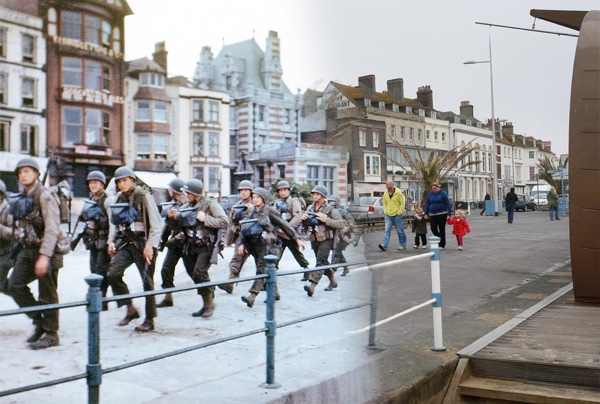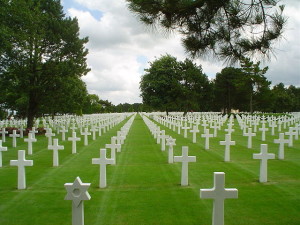Map of D-Day Landings in the Battle of Normandy
It was a World War, but one of the most important operations of WWII can be boiled down to a single day in a single region of a single country. Operation Overlord, otherwise known as the Battle of Normandy, took place on June 6, 1944. There were 13 countries taking part in the bombings, amphibious landings, and fighting that began on what is called “D-Day,” after the military term used to plan the operation in secret. The map below showcases some important landmarks in Normandy, the coastal region across the English channel from Britain.
View Selected D-Day Landmarks in a full screen map
The most well-known aspect of the operation is the beach invasion. Over 4,000 vessels carried over 125,000 troops to six primary landings. Charging amidst German gunfire, this allied success helped regain control of Normandy, then France, and eventually all of western Europe. The beaches are known by their military code names: Utah Beach, Pointe du Hoc, Omaha Beach, Gold Beach, Juno Beach, and Sword Beach.
The largest number of troops landed on Omaha Beach, which was portrayed with bloody accuracy at the opening of the film Saving Private Ryan. Omaha also suffered the most casualties, with as many as 10,000 troops injured or killed. Percentage-wise, the smaller invasions of Utah Beach and Pointe du Hoc saw 35% and 60% casualties respectively.

The Atlantic shared a great then and now photo essay of D-Day for the 70th anniversary.
 There are at least two memorials near the beaches. The best known is the Normandy American Cemetery, where 9,387 US veterans are buried. There is also a memorial near Juno Beach honoring the United Kingdom’s involvement in the operation.
There are at least two memorials near the beaches. The best known is the Normandy American Cemetery, where 9,387 US veterans are buried. There is also a memorial near Juno Beach honoring the United Kingdom’s involvement in the operation.
The map also shows a handful of the important objectives shared by the troops coming across the water and the paratroopers who preceded them behind German lines. Many of the objectives involved either protecting or destroying bridges as a way to control transportation throughout Normandy.
It’s been over 70 years since the invasion. The beach storm changed the tide of the war, which was completely over in Europe a year later.
